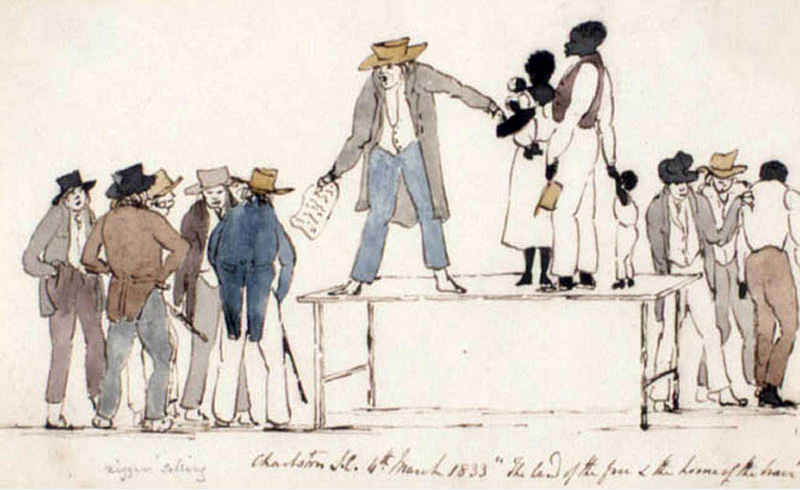What's in a Name?
Page Content
 Since slaves were property, they sometimes took the surname of their owners. Shown above is a pen and ink drawing of a South Carolina slave market in 1833. (Image courtesy Library and Archives Canada)
Enlarge image
Since slaves were property, they sometimes took the surname of their owners. Shown above is a pen and ink drawing of a South Carolina slave market in 1833. (Image courtesy Library and Archives Canada)
Enlarge image One of the difficulties in researching the history of the Black pioneers, particularly those that may have been slaves at some point in their lives, is the lack of consistent names or names at all. Some individuals in this exhibit used their owner’s surname and in some cases, evidence suggests the owner may in fact have been the father.
In 1850 and 1860, there were separate census enumerations of slaves in each state where slavery was legal. Individual slaves were only listed under the owners name and rarely included more than the gender and age of a slave. For example, an entry in the 1850 slave schedule for Franklin County Missouri, has an entry for James Southworth which lists him as owning 3 slaves. Two of the slaves appear to be relatively close matches for Pauline and her son Louis who were brought to Oregon three years after this enumeration. Louis continued to use the Southworth name throughout his life, but other Black immigrants used different surnames after arriving in Oregon.
Another example is Reuben Shipley and his wife Mary Jane who donated land for the Mount Union Cemetery near Philomath. Although he went by the surname of Shipley, his memorial marker lists him as R. E. Ficklin. We believe this surname is from Reuben’s original slave owner. Reuben’s last surviving son also used the Ficklin surname. Adoption of a new surname may have reflected a new status or self-determination in the lives of these individuals, however these changes can cause confusion and difficulties in making connections in the historical records.